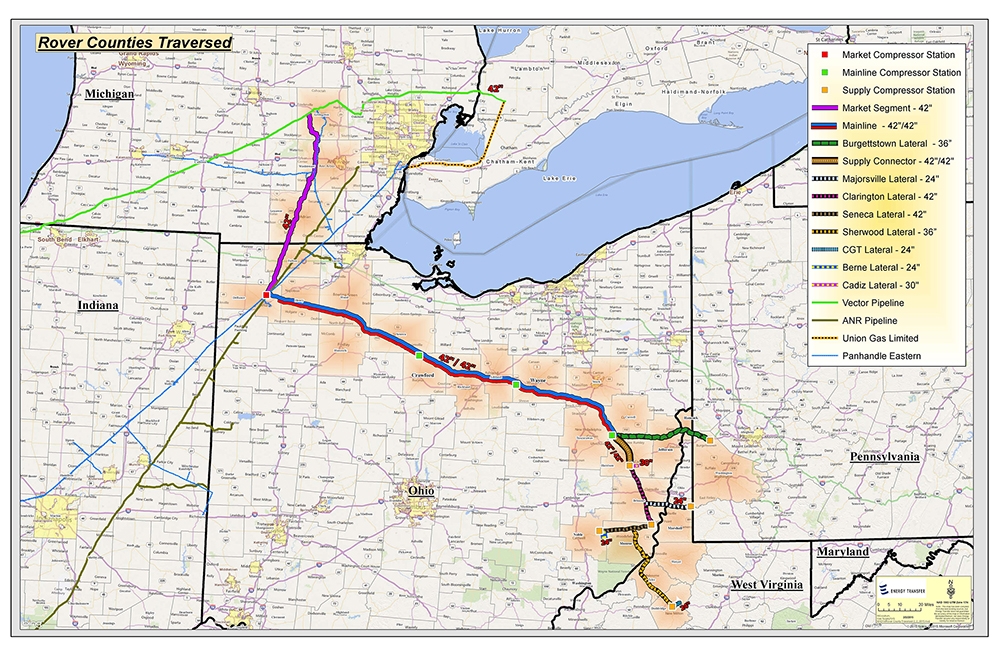HDD Activities Can Resume at More Rover Pipeline Locations

FERC has conditionally approved Energy Transfer Partners’ request to resume horizontal directions drilling (HDD) activities at the following locations along the Rover Pipeline:
- Honey Creek – Energy Transfer Partners states that J.D. Hair & Associates’
recommendation of using an 8-degree overbend is not feasible, and that increasing the exit angle and breakover height is not possible due to safety concerns associated with overhead power lines. Due to these constraints and J.D. Hair & Associates’ review, FERC recommends maintaining the original 2.5-degree overbend to 6-degree exit angle. - Interstate Highway 77
- Ohio River Majorsville
- Norfolk Southern Railroad – Revision 0 of the design drawing for Line B, dated July 7, 2017, incorporates Geo-Engineers recommended design modifications by increasing the entry/exit angles from 8 degrees to 11 degrees on the east side and from 14 degrees to 15 degrees on the west side, and dropping the bottom design tangent by 10 feet. Based on input from J.D. Hair & Associates, these recommendations should reduce the risk of HDD operational problems associated with drilling within the bedrock-transition zone.
The Rover Pipeline Project consists of new interstate pipeline and related facilities extending from the Appalachian supply area to a proposed interconnection with Vector Pipeline, LP in Livingston County, Michigan. It will transport up to 3.25 billion cubic feet per day of domestically-produced natural gas to markets in the Midwest, Northeast, East Coast, Gulf Coast and Canada, with direct deliveries to Ohio, West Virginia, Michigan, and into the Dawn Hub in Ontario, Canada, which includes a broader network of distribution points back into the U.S.
The project is expected to be operational in November 2017.
Related News
Related News

- Keystone Oil Pipeline Resumes Operations After Temporary Shutdown
- Biden Administration Buys Oil for Emergency Reserve Above Target Price
- Freeport LNG Plant Runs Near Zero Consumption for Fifth Day
- Enbridge to Invest $500 Million in Pipeline Assets, Including Expansion of 850-Mile Gray Oak Pipeline
- Williams Delays Louisiana Pipeline Project Amid Dispute with Competitor Energy Transfer
- Evacuation Technologies to Reduce Methane Releases During Pigging
- Editor’s Notebook: Nord Stream’s $20 Billion Question
- Enbridge Receives Approval to Begin Service on Louisiana Venice Gas Pipeline Project
- Russian LNG Unfazed By U.S. Sanctions
- Biden Administration Buys Oil for Emergency Reserve Above Target Price




Comments